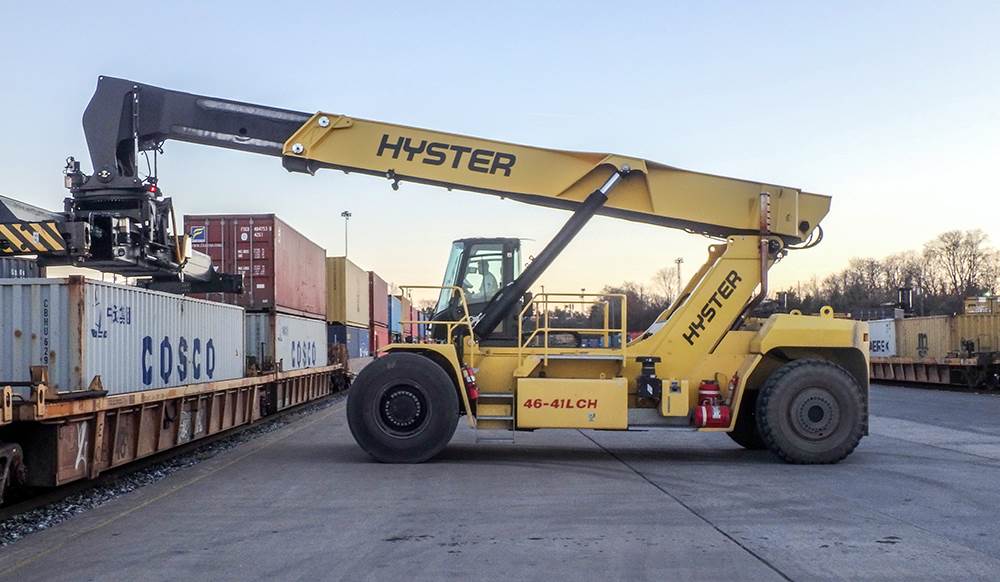Pavement design lessons are costly. An inadequate pavement section will fail, and the owner is out the initial investment and likely faces an expensive solution. Conversely, the over-design of a pavement section will increase the initial capital outlay, which may not benefit the owner in the long-term. It is critical to find the right pavement section for a project. For railroad intermodal facilities and yards, good pavement design starts with a geotechnical investigation and understanding the yard operations, including the lift equipment and truck traffic required for the facility’s operation.
Intermodal facilities use specialized lift equipment to handle container movements between trains and trucks. This lift equipment includes side loaders, reach stackers and rubber-tired gantry cranes that transfer considerable loads to the pavement. This type of equipment can be very destructive to pavement that is not designed to accommodate that amount of stress. Understanding where lift equipment will operate within the facility and providing a suitable pavement section are crucial.
 Lift equipment like this reach stacker can damage pavement that is not designed to handle the weight.
Lift equipment like this reach stacker can damage pavement that is not designed to handle the weight.
Hanson was recently retained to provide pavement restoration design services at a privately owned intermodal terminal that used a side loader operation. Our review of the original design provided by others determined that the facility’s pavement was considered for only truck traffic, not lift equipment. The pavement began to fail within two weeks of the facility opening, disrupting the operation. The pavement failures damaged the lift equipment and the storm sewer. Hanson’s design used the existing pavement as a base for the proposed pavement section. This reduced the required construction time and mitigated the potential for construction delays due to inclement weather.
Truck traffic and hostlers are also prevalent at intermodal and railroad facilities. It is important to consider hostler traffic within an intermodal facility, because the single rear axle transfers more load to the pavement than a typical over-the-road truck with dual rear axles. Good estimates of anticipated truck traffic volumes and selecting a pavement design life and material type are key to determining the right pavement for truck traffic areas.
Contact Max Rexroad at mrexroad@hanson-inc.com or Scott Opie at sopie@hanson-inc.com to discuss pavement design for your rail infrastructure.